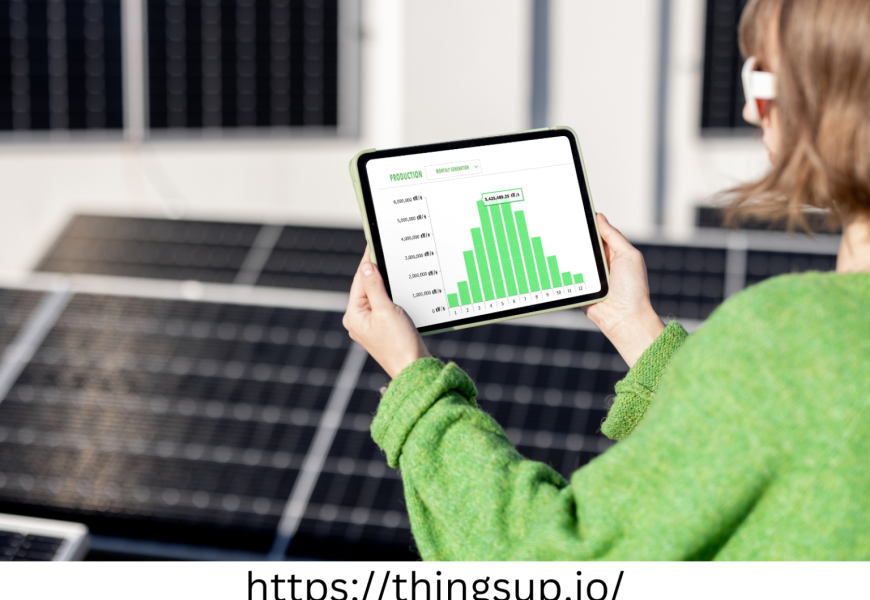Effective energy management is essential for households, organisations, and industries in today’s digital environment. In this area, wireless energy monitoring technology has become revolutionary, offering a seamless means of tracking, managing, and optimising energy consumption. This technology allows real-time data collecting and analysis by utilising IoT platforms and energy monitoring systems, which results in significant cost reduction, energy savings, and sustainable practices.
The fundamentals of wireless energy monitoring technology are covered in this essay, along with its operation, important parts, and advantages for contemporary energy management.
1. Gaining Knowledge about Wireless Energy Monitoring Technology
Wireless energy monitoring technology is a system that measures, tracks, and analyses energy use using wireless communication. Wireless technology uses radio waves, Wi-Fi, or other wireless protocols to transfer data, which makes installation simpler and less expensive than traditional energy monitoring systems, which can call for intricate cabling configurations.
Important Features
So, wireless communication is the transfer of data without the use of physical cables.
Real-Time Data Collection: Energy data is constantly gathered to provide real-time insights.
IoT Integration: This technology enables customers to remotely manage energy and is frequently connected to IoT platforms.
2. Essential Elements of a Wireless Energy Tracking Device
Typically, wireless energy monitoring system consist of the following crucial elements:
Sensors: To detect energy parameters like voltage, current, and power consumption, sensors are mounted on machinery or devices. These sensors collect unprocessed data and send it wirelessly to a central location.
Gateway: The gateway serves as a conduit between the Internet of Things platform and the sensors. After gathering information from several sensors, it transfers it to a cloud-based system for additional processing.
IoT Platform: An IoT platform controls data flow, storage, and analytics, acting as the system’s backbone. It makes remote device management, sophisticated data analytics, and real-time monitoring possible.
User Interface (UI): An intuitive interface that enables users to visualise data, establish thresholds, and create reports. It can be accessed through an online dashboard or mobile app.
3. What Is the Process of Wireless Energy Monitoring?
Here, the procedure for wireless energy monitoring is simplified:
Data collection: Sensors record linked devices’ energy use.
Data Transmission: The gateway receives the gathered data via wireless transmission.
User Interaction: By using a web or mobile app, users can receive real-time analytics that allow them to track usage trends and identify irregularities.
Users can more easily adopt energy-saving techniques by using IoT platforms to obtain greater insights into energy patterns. Moreover, AI-based analytics can predict future energy consumption trends, enhancing decision-making.
4. Wireless Energy Monitoring Technology Advantages
Wireless energy monitoring technology has several transformational benefits.
Savings on expenses
Wireless energy monitoring helps customers to detect waste and optimise energy use by giving them real-time data on energy consumption. Significant utility bill savings may result from this.
Efficiency of Energy
Energy-saving measures are easier to execute when energy use is tracked across many devices and buildings. For instance, intelligent scheduling can increase overall efficiency by lowering the energy load during peak hours.
Remote Control and Monitoring
Monitoring energy use from any location is made easy by IoT technologies. So, remote monitoring of energy use by facility managers and business owners is particularly advantageous for organisations with various sites.
Sustainability
Wireless monitoring supports sustainable objectives and helps companies reduce their carbon footprint by cutting down on wasteful energy use.
5. Wireless Energy Monitoring Technology Applications
Applications for wireless energy monitoring are numerous and span several industries:
Industrial Manufacturing: By tracking energy use at every stage of manufacturing, industries can find methods to save costs and boost productivity.
Commercial Buildings: By monitoring energy consumption in real time, offices, shopping centres, and lodging facilities may optimise equipment, HVAC systems, and lighting to lower operating expenses.
Smart Homes: By using wireless energy monitors to track the energy consumption of particular appliances, homeowners may cut costs and waste.
Agriculture: By keeping an eye on the energy use of lighting, irrigation systems, and other equipment, farmers may optimise their use and cut expenses.
Data Centres: By balancing power consumption and cooling needs, wireless monitoring aids in the management of data centres’ energy-intensive operations.
6. Crucial Elements of a Wireless Energy Monitoring Device
Take into account the following characteristics when choosing a wireless energy monitoring system:
IoT Platform Compatibility: For efficient data processing and management, the system should seamlessly interact with IoT platforms.
Real-time monitoring is essential for prompt interventions, therefore make sure the system offers real-time data updates.
User-Friendly Dashboard: An easy-to-understand dashboard makes it easier to evaluate data and track key performance indicators.
Scalability: As the requirement for energy monitoring increases, the system should be able to grow with it.
Data Security: Strong encryption and security procedures are necessary because sensitive energy data is involved.
7. Difficulties with Wireless Energy Monitoring Implementation
Despite the numerous advantages of wireless energy monitoring, there are a few things to keep in mind:
Data security and privacy: IoT systems and wireless transmission are susceptible to cyberattacks. System security and data integrity protection are essential.
Upfront Costs: Despite the long-term cost savings of these systems, the initial outlay may be substantial, particularly for big installations.
Signal Interference: Wireless signals may experience interference in areas with thick materials or heavy equipment, which could lower the quality of data transmission.
Moreover, notwithstanding these obstacles, developments in wireless and Internet of Things technologies are resolving these problems and boosting the accessibility and dependability of energy monitoring.
8. Wireless Energy Monitoring’s Future
Wireless energy monitoring technology has a bright future thanks to developments like:
AI-Driven Analytics: AI-powered improved analytics can forecast usage patterns, maximise energy efficiency, and offer sophisticated insights.
Integration with Renewable Energy: By making it easier to manage renewable energy sources like wind and solar, wireless energy monitoring can improve grid balancing and sustainability.
5G Connectivity: The emergence of 5G will improve real-time monitoring capabilities even in remote areas by enabling faster and more dependable data transfer.
Wireless energy monitoring systems will develop further as technology progresses, providing even more powerful instruments for effective and sustainable energy management.
Conclusion
IoT platforms have enabled wireless energy monitoring technologies, which has revolutionised energy management and optimisation. Its advantages are numerous and significant, ranging from cost savings and sustainability to real-time information. So, businesses, industries, and homes can make well-informed decisions that promote efficient energy use and contribute to a sustainable future by learning the fundamentals of wireless energy monitoring and utilising its possibilities.
In addition to technology, wireless energy monitoring aims to promote an efficient, conscious, and environmentally conscious culture that will influence how we use energy going forward.
Read more: https://andersontomorrow.com/why-dubais-web-design-companies-are-a-game-changer/









